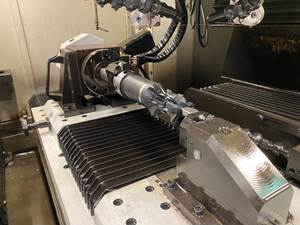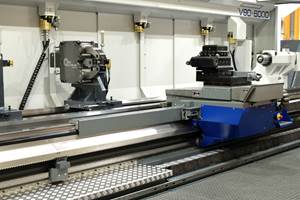Gage Accuracy Runs Hot And Cold
“It takes a while to warm up in the morning, but after that, it runs great. ” I swear that machinists apply this statement to their gages as if the instruments were like car engines with 50-weight motor oil and cold-intake manifolds.
“It takes a while to warm up in the morning, but after that, it runs great.” I swear that machinists apply this statement to their gages as if the instruments were like car engines with 50-weight motor oil and cold-intake manifolds.
Of course, what’s really happening is the machinist arrives at work; takes the gage and master out of a controlled environment; masters the gage; and then gets to work. As the machinist handles it, the gage begins to warm up. This does not mean the moving parts move more freely, but rather that the gage itself expands. Depending upon where the machinist keeps the master, and whether or not he or she re-masters regularly, the machinist ends up “chasing the reading” until everything reaches equilibrium. This could potentially take hours.
Thermal effects are among the most pervasive sources of gaging error. Dirt, as a gaging problem, is either there or it isn’t. However, everything has a temperature—even properly calibrated gages and masters. The problem arises from the fact that everything else has a temperature too, including the air in the room, the workpiece, the electric lighting overhead and the operator’s fingers. Any one of these “environmental” factors can influence the reading.
Why is temperature such a critical concern? Because most materials expand with heat, and they do so at differing rates. For every 10° F increase in temperature, an inch of steel expands by 0.000060 inch. “Not to worry,” you might say, “I am only working to ‘tenths’.” Aluminum, though, expands at more than twice that rate; tungsten carbide expands at about half the rate. What happens to your reading if you are trying to measure a 2-inch aluminum workpiece with a steel-framed snap gage and tungsten carbide contacts? Now, take into consideration that the workshop has just warmed up by 7 ° F. There are other questions you should ask: “Did the workpiece just come off the machine? How hot is the workpiece?
Only you can answer these questions based on your setup. That’s why it’s critical to keep the gage, the master and the workpiece all at the same temperature.
This means keeping an eye on many factors. Don’t put your master away like some sacred object. Gage and master must be kept together to ensure that they “grow” in tandem and to permit frequent re-mastering. Workpieces must have sufficient time to reach ambient temperature after machining or after being moved from room to room. The operator should handle the gage, master and workpiece only when necessary.
Care must be taken that sources of heat and cold in the room do not intrude on the process. Incandescent lighting; heat and
air conditioner ducts; and even a shaft of direct sunlight through a window can alter a whole series of measurements. Keep things at the same “altitude” in the room to avoid the effects of temperature stratification.
As tolerances tighten, additional measures are necessary. Workpieces should be staged on a heat sink beside the gage and should be handled with forceps or gloves. A Plexiglas shield may be required to protect the gage from the operator’s breath. (The heat, that is, not the effects of the sardine sandwich the operator had for lunch).
For accurate gaging, be aware of possible sources of thermal “contamination” to the measurement process. While it may not be possible to isolate your gaging process in its own perfectly controlled environment, at least take precautions to minimize the effects of temperature variation on your gages, masters and workpieces.
Related Content
Dielectric Oil Dramatically Reduces EDM Maintenance
Plagued by repeated small fires that interrupted its wire EDM throughput, this cutting tool manufacturer changed its dielectric oil and both eliminated fires and reduced its oil consumption.
Read MoreFive-Axis Changes Weldments Into Monolithic One-Piece Parts
Moving from welding to five-axis machining enabled Barbco to redesign its weldments as monolithic one-piece parts with improved strength and repeatability.
Read More3+3 Air Chuck Features Extended Stroke and Self-Centering
To keep up with the demands of the oil and gas industry, SMW Autoblok introduces BBFZA2G Air Chuck, featuring an extended stroke clamping range and three self-centering jaws.
Read More4-way Bed Precision Lathe Features Automated Cycles
Long and thin workpieces can be machined without reclamping on this new machine from Weiler, according to the company.
Read MoreRead Next
The Cut Scene: The Finer Details of Large-Format Machining
Small details and features can have an outsized impact on large parts, such as Barbco’s collapsible utility drill head.
Read More3 Mistakes That Cause CNC Programs to Fail
Despite enhancements to manufacturing technology, there are still issues today that can cause programs to fail. These failures can cause lost time, scrapped parts, damaged machines and even injured operators.
Read More









.png;maxWidth=300;quality=90)













